Cyberpunk 2077's clever AMD FSR 2.0 mod can double performance but is definitely a work in progress
We've put this one-man FSR 2.0 mod up against DLSS 2.0 and the results are impressive. Just kill motion blur, eh?
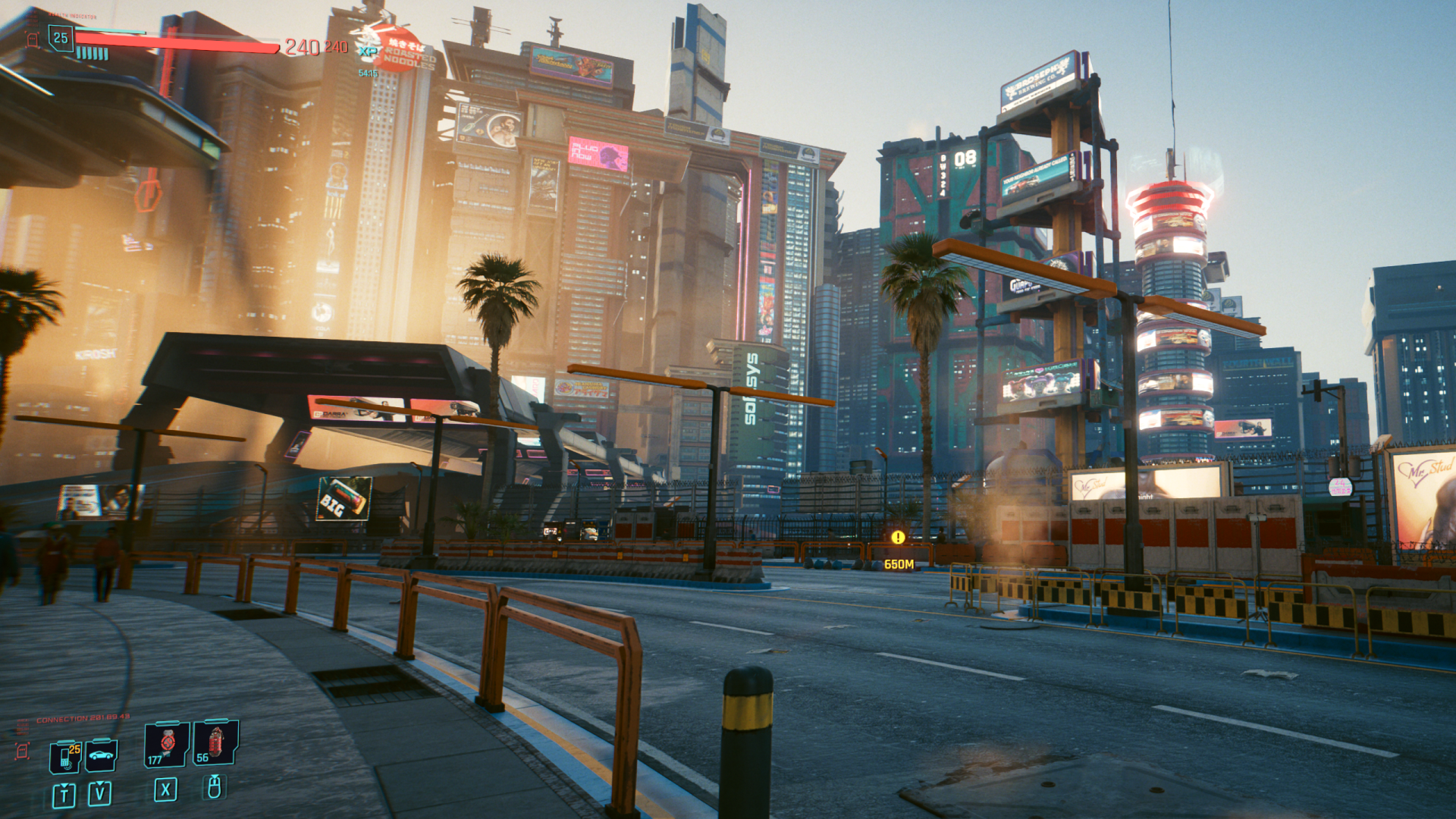
Last week AMD made its FidelityFX Super Resolution (FSR) 2.0 upscaler open source on Github so that developers could easily implement its latest upscaling technology into their own games with the minimum of fuss. To prove just what is possible in this brave new world, one enterprising mod, the wonderfully named PotatoOfDoom, has used this to add FSR 2.0 to Cyberpunk 2077.
This is more a proof of concept than anything else, but it works and can boost your framerates significantly too.
How it works is probably the most impressive thing of all. Our heroic modder has taken the DLSS framework and repatched it to use the AMD FSR 2.0 DLLs. Once you've downloaded the files and copied them to the same location as the main Cyberpunk 2077 executable you'll need to run a specific registry tweak to set up the translation from DLSS to the FSR 2.0 commands.
In case you're wondering, Cyberpunk 2077 already has support for AMD FSR 1.0, which is a fine way of boosting your performance if you don't have access to DLSS, but it basically doesn't look anywhere near as good. That first implementation isn't a temporal upscaler, so you'll see plenty of shimmering of smaller elements like wires and railings. FSR 2.0, however, is temporal, so the biggest thing you'll spot is that in motion it simply looks much better.
If you're rocking an Nvidia graphics card that has the silicon to handle DLSS (i.e. is an RTX graphics card), then that should still be your preferred choice.
As you can see from the benchmarks below, DLSS is not only quicker, but it looks better too, although honestly, it's so close to FSR 2.0 that you'd be hard pushed to spot the difference outside of pausing the game and comparing screenshots. At least for the most part—there are a couple of artifacts with this implementation, but it's still better than FSR 1.0.
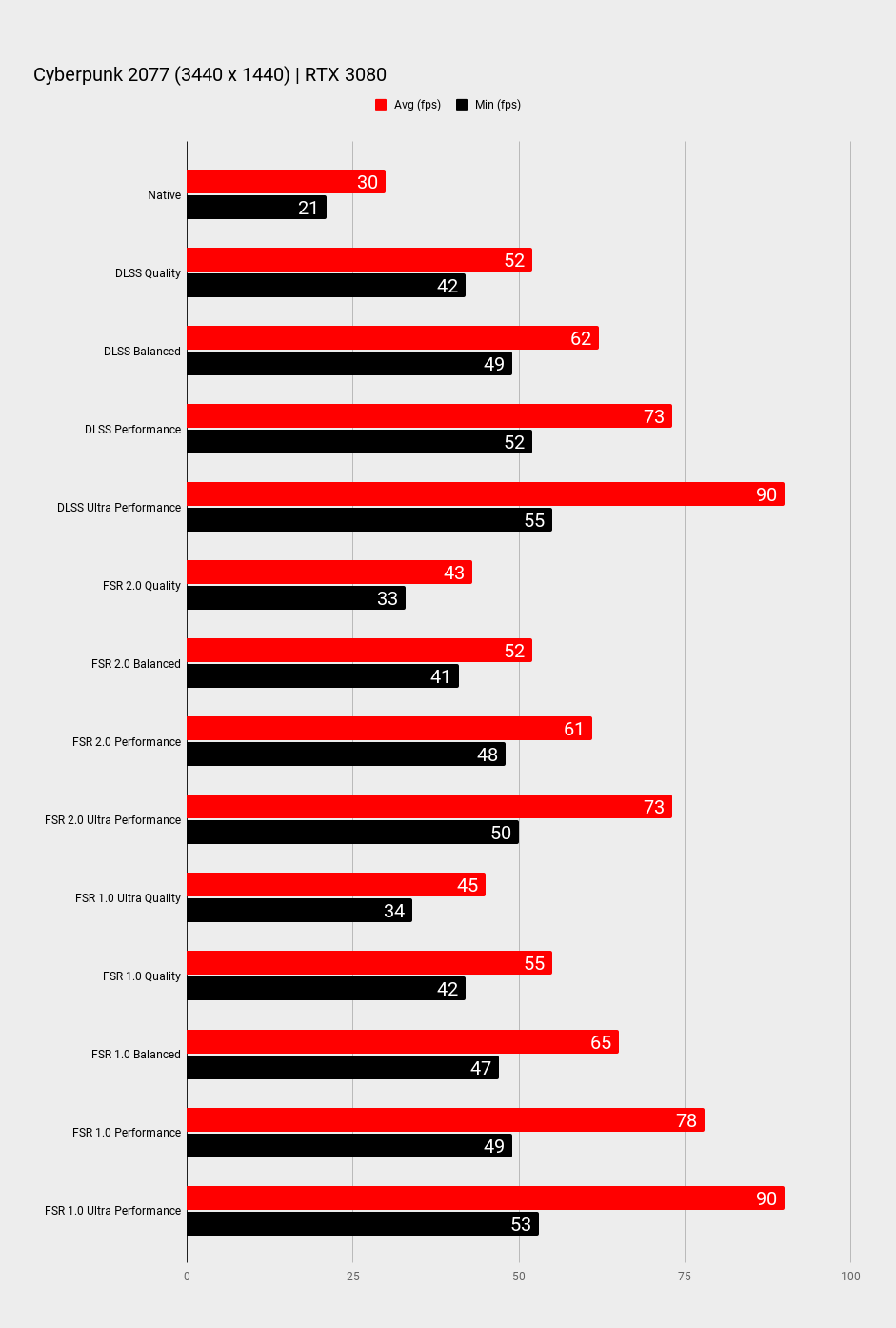
The above performance was garnered using an RTX 3080 at the high preset, but with motion blur turned off. Even though this is a beast of a card, it still needs some form of upscaling to hit smooth frame rates at 3440 x 1440. This card is capable of running the Quality upscaling presets, and here there isn't a lot between DLSS and FSR 2.0.
Keep up to date with the most important stories and the best deals, as picked by the PC Gamer team.
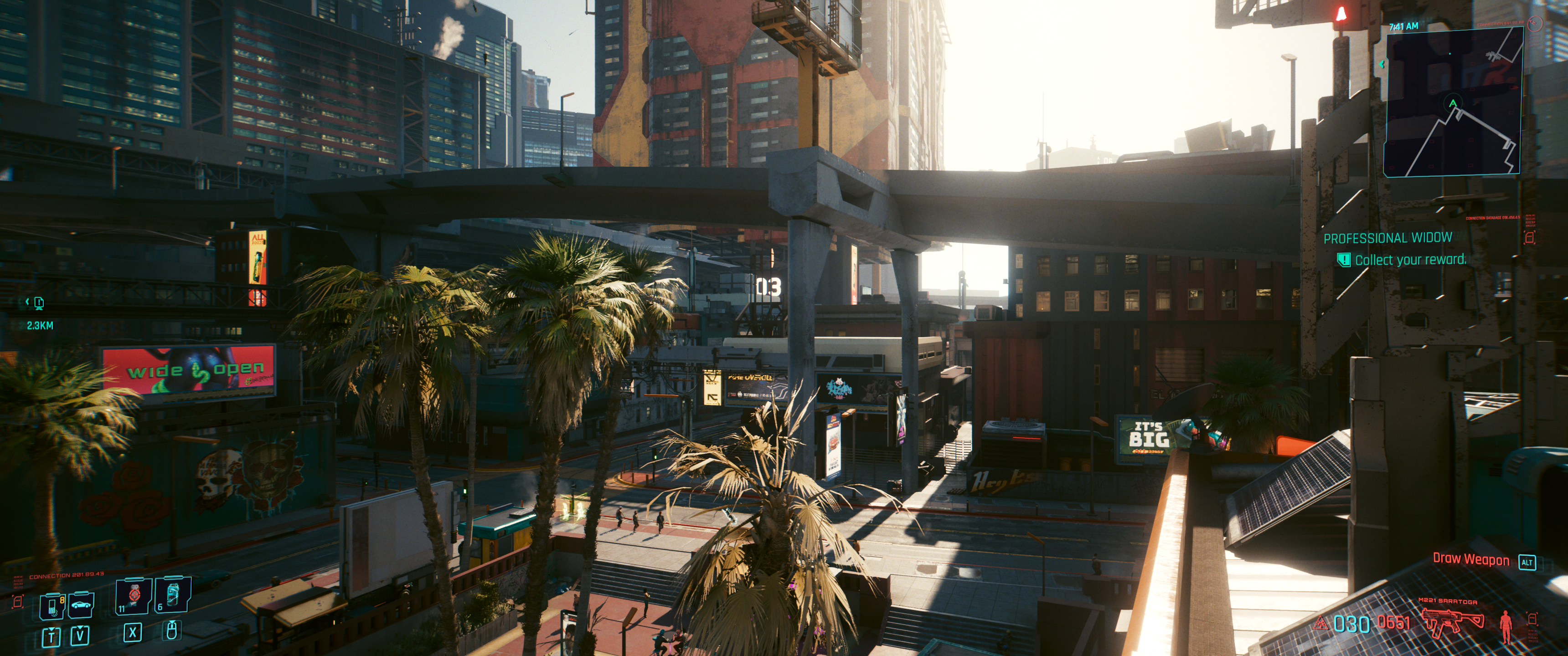
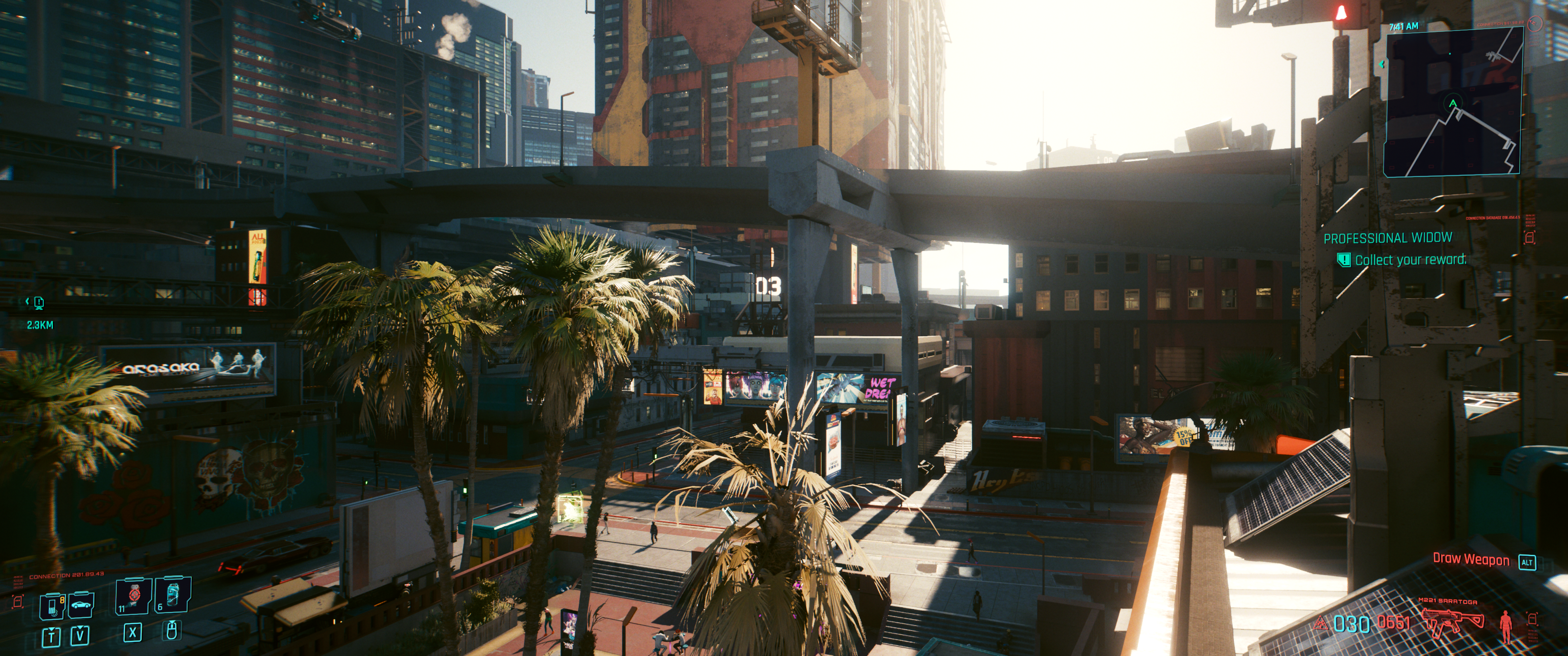


One thing to note from these performance figures is that FSR 2.0's quality looks much better than the FSR 1.0 equivalent. So while this newer version of AMD's upscaling technology has a small performance hit over the original at the same quality setting, it means you can actually drop to a lower preset and enjoy a better gaming experience.
Realistically you're going to want to use FSR 2.0 on older graphics cards, and that means the various high-quality settings are going to be a bit too demanding on your hardware. This means you're going to want to look at the Ultra Performance upscaling instead, and here the difference between FSR 1.0 and FSR 2.0 is much more pronounced.


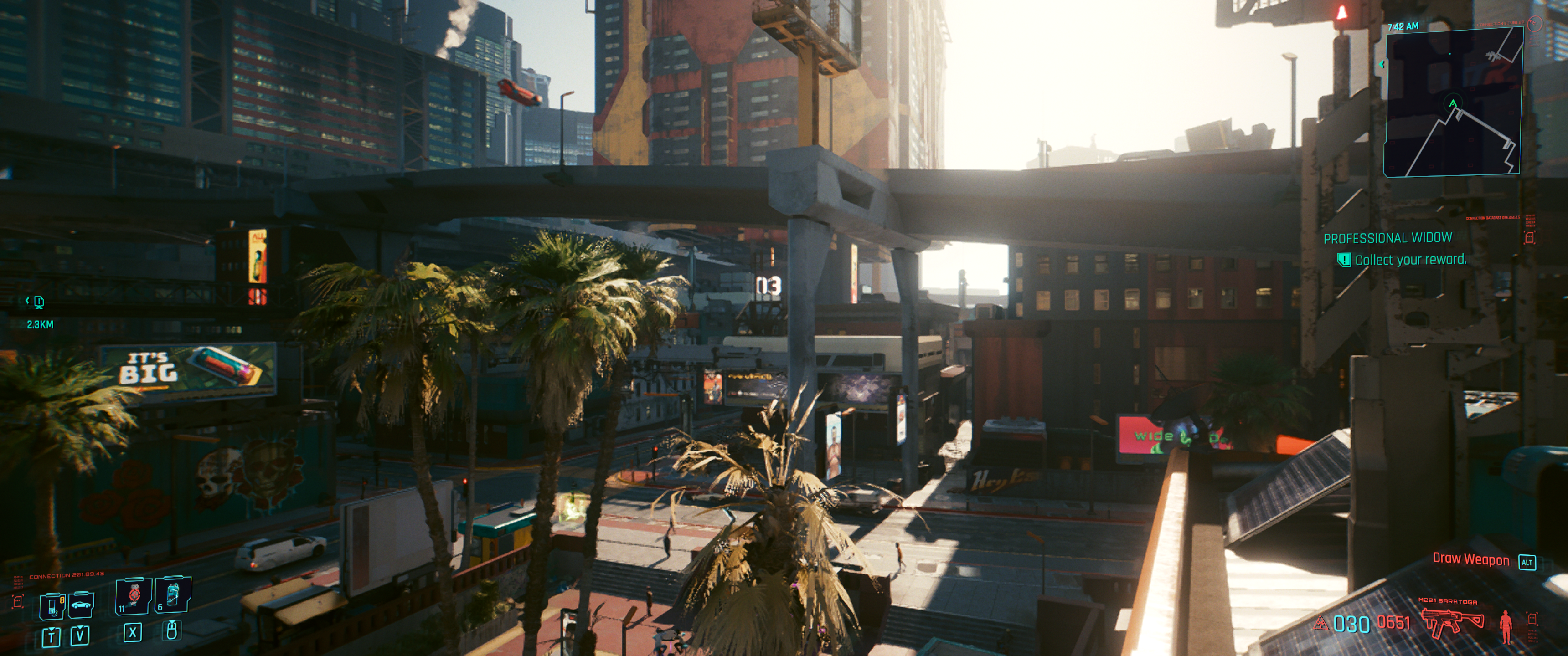
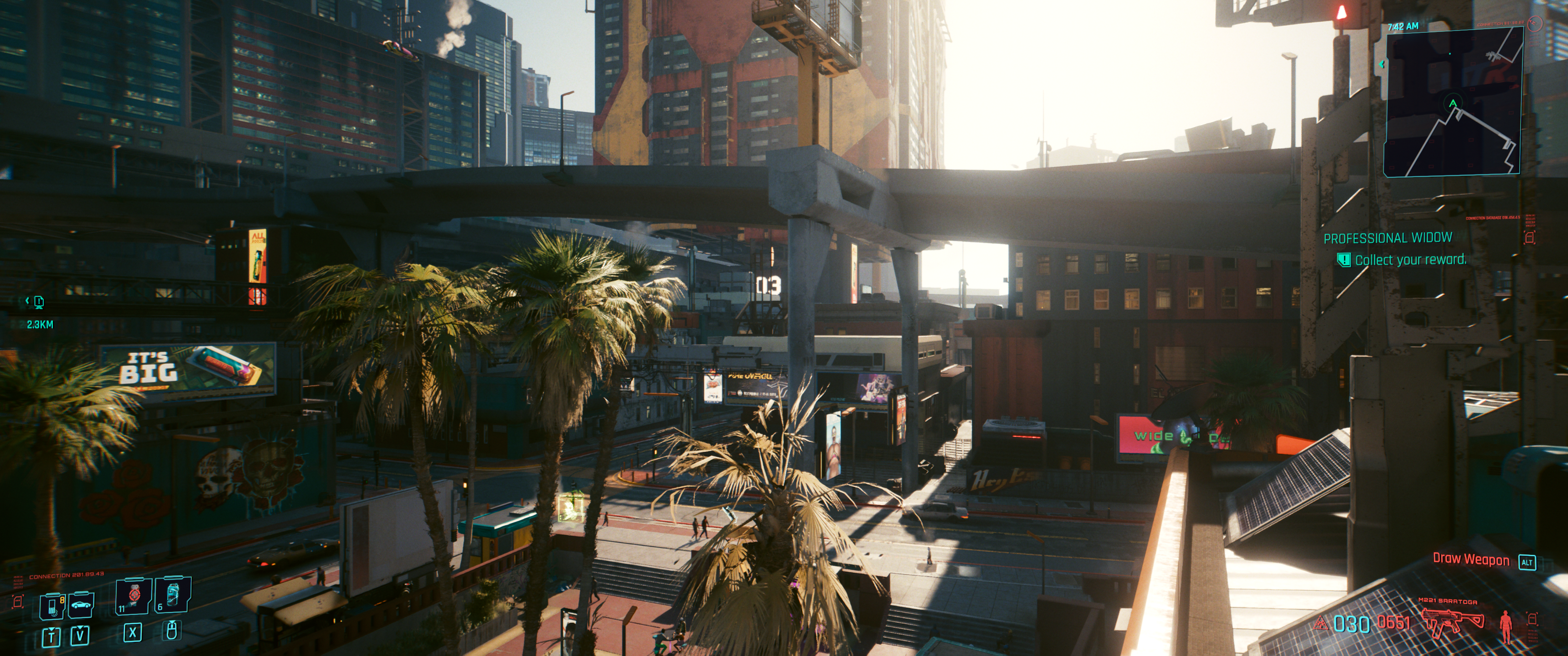
This mod is a work in progress, so don't be surprised if you run into a few glitches along the way. Reflections appear to suffer right now, and you'll notice heavy ghosting when driving too. But honestly, given this is the work of a single modder, it's impressive that it runs at all.
PSA: Turn motion blur off. If you don't, the game will run overly dark and you'll get black flickering when you look around. To be fair you should turn off motion blur anyway, as it's fairly vomit-inducing at the best of times, but it's particularly important here.
It'll be interesting to see if CD Projekt Red officially adds FSR 2.0 to Cyberpunk 2077 in a future patch. We're expecting Cyberpunk's first expansion later this year, although there's nothing official on the release date so far.
Alan has been writing about PC tech since before 3D graphics cards existed, and still vividly recalls having to fight with MS-DOS just to get games to load. He fondly remembers the killer combo of a Matrox Millenium and 3dfx Voodoo, and seeing Lara Croft in 3D for the first time. He's very glad hardware has advanced as much as it has though, and is particularly happy when putting the latest M.2 NVMe SSDs, AMD processors, and laptops through their paces. He has a long-lasting Magic: The Gathering obsession but limits this to MTG Arena these days.


